Figuring out which water filter or purifier to take backpacking is a confusing task. On one hand, you’ve got people who say they drink directly from mountain streams and are “fine.” On the other, there’s the risk of getting gut-wrenching diarrhea in the middle of your trip.
Speaking from experience, it’s hard to dig a cathole when you are vomiting and crapping every 15 minutes! At best, a waterborne disease can make for a miserable day hiking. At worst, you can end up seriously ill and stranded in the middle of the wilderness and hopefully have a SPOT device or other way to call for help.
Because of how serious waterborne illness can be, it is really important you treat water before drinking it. The same applies to tap water when traveling in underdeveloped countries. It’s simply not worth the risk to drink untreated water, even from clear mountain streams.
However, that doesn’t mean you have to bring an expensive, complex, or heavy water purifier on your trip. I usually just bring the Sawyer Mini, which is dirt cheap and weighs a mere 2oz.
Let me emphasize that no water treatment system is perfect. There’s always going to be some tradeoff. For example, micro filters that remove viruses have low flow rates and clog easily. Water filters that can remove chemicals have cartridges that have to be changed frequently, so end up costing a lot in the long run.
In this article, I will go over these tradeoffs so you can pick the best water filter or purifier for your trip. Price, weight, ease of use, and effectiveness have all been taken into consideration.
My Recommendation?
The choice of best backpacking filter/purifier really varies depending on your budget and where you are going. I recommend:
- The MSR Guardian: For serious backpackers because it treats pathogens including viruses. It treats up to 10,000 liters so pays off in the long run. Get it at or Amazon.
- Sawyer Mini: In backcountry areas where viruses aren’t a concern, the Sawyer Mini is a cheap, lightweight solution for treating water. Get it at or Amazon.
Best Backpacking Water Filters and Purifiers
| Product | Treats | Time/Flow Rate | Lifespan | Weight | Price Per Liter Treated |
|---|---|---|---|---|---|
| Sawyer Mini (Squeeze Filter) Buy at , Amazon | Bacteria Protozoa Worm eggs Sediment | 0.5-1 liter/minute | 100,000 gallons | 3oz | $ |
| MSR MiniWorks Ex (Pump Filter) Buy at , Amazon | Bacteria Protozoa Worm eggs Sediment Some chemicals Bad tastes | 1 liter/minute | 2,000 liters | 16oz | $$ |
| GRAYL GeoPress (Bottle Filter) Buy at , Amazon | Bacteria Protozoa Worm eggs Viruses Sediment Chemicals Bad tastes | 5 liters/minute | 65 gallons per cartridge | 15.9oz | $$$$$ |
| MSR Guardian (Pump Filter) Buy at , Amazon | Bacteria Protozoa Worm eggs Viruses Sediment | 2.5 liters/minute | 10,000+ liters | 17.3oz | $$ |
| Katydyn Hiker Pro (Pump Filter) , Amazon | Bacteria Protozoa Worm eggs Sediment Chemicals Bad tastes | 1 liter/minute | 200 gallons per cartridge | 11oz | $$$ |
| MSR Trail Base and TrailShot (Gravity/Pump Filter) Buy at , Amazon | Bacteria Protozoa Worm eggs Sediment | 1 liter/minute | 1,500 liters | 19.6oz/5oz | $$$ |
| Aquatabs (Tablets) Buy at Amazon | Bacteria Viruses | 30 minutes | 1 tablet/liter | <1oz | $ |
| Katadyn Micropur MP1 (Tablets) Buy at , Amazon | Bacteria Protozoa Viruses | 4 hours | 1 tablet/liter | <1oz | $$$$$ |
| SteriPEN Ultra (UV Purifier) Buy at , Amazon | Bacteria Protozoa Viruses | 1 liter/90 seconds | 8,000 liters | 5oz | $ |
*I calculated the cost per liter of water treated based on current price at time of writing. Prices may have changed!
1. Sawyer Mini Water Filter
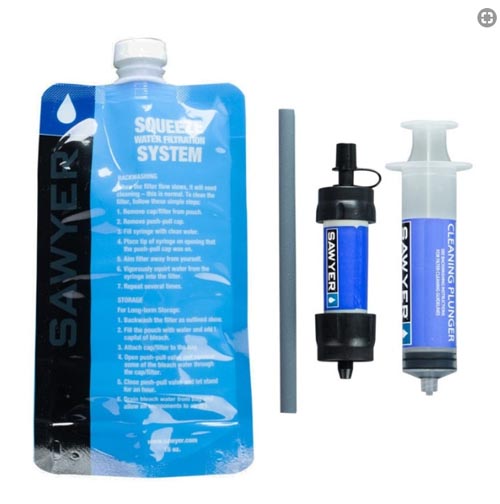
Best For: Backpackers on a budget in places where viruses aren’t a concern.
- Type: Squeeze filter and straw
- Weight: 2oz
- Life: 100,000 gallons
- Time: 0.5-1 liters per minute
- Price per liter filtered: < $0.01
- Treats: Bacteria, protozoa, eggs
- Buy At: , Amazon
Review:
I am a huge fan of the Sawyer Mini water filter and have been using the same one for 5+ years over dozens of trips. The main reason that I love the Sawyer Mini is because it has an infinite filter life. So long as you don’t let the filter freeze after using it (which would cause the water inside the filter to expand and destroy the filter membrane), it will last you forever.
The initial price of the Sawyer Mini is very cheap. Since you never have to replace the cartridge, the long-term price of this is dirt cheap. It ends up costing less than 1 cent per liter treated.
The main downside about the Sawyer Mini is its incredibly slow flow rate. Since it’s a squeeze type filter, your hands can get tired as you manually push the water through the filter. The squeeze bags that come with the filter are really cheap and will burst. For this reason, I don’t even bother with the squeeze bags anymore; I just screw the Sawyer Mini on top of a plastic water bottle and squeeze the bottle. It’s definitely not ideal to use, but for the price and weight, it is great for backpackers on a budget.
Note the Sawyer Mini doesn’t remove viruses. Viruses aren’t a concern in most remote wilderness areas. On popular hiking trails where hikers poo near water sources, or for traveling in underdeveloped countries, you’ll want to treat the water after filtering with boiling, UV light, or treatment tablets. Read my full review of the Sawyer Mini here.
Pros:
- Incredibly cheap
- Never replace a filter cartridge
- Lightweight and compact
- Versatile
Cons:
- Very slow flow rate
- Clogs easily in murky water
- Can’t be frozen
- Squeeze bags burst easily
2. MSR MiniWorks EX
Best For: A cheap way of treating viruses after filtering
- Type: Filter
- Weight: 16oz
- Time: 1 liter/minute
- Price per liter filtered: $0.045
- Treats: Bacteria, protozoa, eggs, some chemicals, bad tastes
- Buy At: , Amazon
Review:
The MSR MiniWorks Ex is one of the most popular backpacking water filters. It is a ceramic filter with an absolute pore rating of 0.1 microns. This will keep out bacteria, protozoa, and large pathogens like tapeworm eggs.
What makes the MiniWorks Ex different from other filters is it has a carbon element which will also remove some chemicals. It will also remove bad tastes from water. It boasts an “AirSpring Accumulator” mechanism which makes pumping easier and faster. You will still only get 1 liter per minute though and the filter tends to get clogged.
Instead of backflushing, you can dissemble the filter in the field and scrub it clean. I personally find this method more effective than backflushing, especially when you don’t have clean water reserved for backflushing.
The other cool thing about the MSR MiniWorks Ex is it attaches to a Nalgene bottle, so you can pump directly into the bottle. The 2,000 filter life means it works out to about 5 cents per liter treated. Not bad for a filter which removes some chemicals too!
The main downside is the filter is very heavy at 16oz. It’s also pretty bulky, so not exactly suitable for thru hiking or ultralight backpacking.
Pros:
- Removes chemicals and bad tastes
- Good filter life
- Easy to pump
- No backflushing to clean
Cons:
- Very heavy and bulky
- Tends to clog
3. MSR Guardian
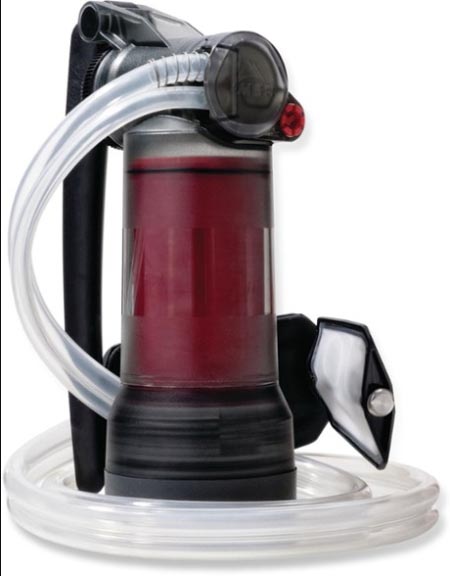
Best For: Backpackers who don’t mind investing in gear that will pay off over the long run.
- Type: Pump filter
- Weight: 17.3oz
- Cartridge Life: 10,000+ liters
- Time: 2.5 liters per minute
- Price per liter filtered: $0.03
- Treats: Bacteria, protozoa, eggs, viruses
- Buy At: , Amazon
Review:
The MSR Guardian has long been considered the best backpacking water filter. Albeit quite heavy, the filter boasts impressive features that virtually no other filter can rival
For starters, the filter is very easy to use. You still have to pump the Guardian, but the large hand lever makes this easy. There’s a long tube for drawing in the dirty water, so you don’t have to crouch close to the water source like with some water filters.
The 2.5 liter/minute flow rate is much faster than most backpacking water filters. The MSR Guardian also boasts a built-in backflush system so you don’t ever have to clean the filter out. After dealing with clogs when filtering lake water multiple times, this is a feature you can really appreciate!
The MSR Guardian pore size is 0.02 microns. The small pore size means it is capable of removing viruses as well as bacteria, protozoa, and worm eggs. You’ll be able to use it in the wilderness or when traveling abroad.
The major downside of the MSR Guardian is its high price tag. However, the cartridge lasts 10,000+ liters. That breaks down to about $0.13 per liter treated. If you plan on backpacking or traveling abroad frequently, the investment pays off quickly.
Pros:
- Treats viruses
- Self-cleaning filter
- Fast flow rate
- Easy to use
- 10,000+ liter life
- Pays off on long run
- Suitable for backpacking and travel
Cons:
- Expensive initial buy
4. Katadyn Hiker Pro Clear
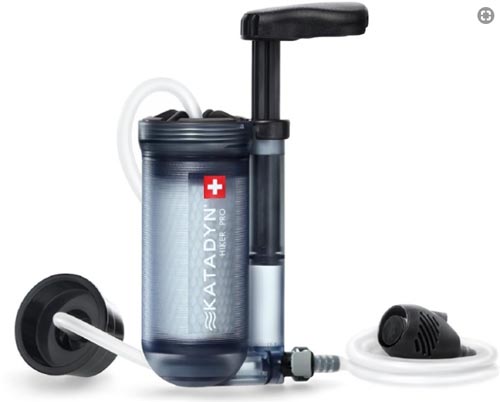
Best For: Backpackers willing to pay more to remove bad tastes and some chemicals
- Type: Pump filter
- Weight: 11oz
- Cartridge Life: 200 gallons
- Time: 1 liter per minute
- Price per liter filtered: $0.23
- Treats: Bacteria, protozoa, eggs, some chemicals, bad tastes
- Buy At: Amazon
Review:
The Katadyn Hiker Pro is a pump-type water filter. It’s got a nice big hand pump, so is fairly easy to use. I also like that it has a tube that goes into the water so you don’t have to crouch right into the water source.
Compared to other backpacking water filters, the Katadyn Hiker Pro stands out because it has an activated carbon element in it. This removes some chemicals and bad tastes from water. It won’t treat viruses though.
The main downside of the Hiker Pro filter is it has a short cartridge life of 200 gallons. If the water is very murky, it will last even less. Replacement cartridges are pricy; over the long run, this ends up costing quite a bit in replacement cartridges.
Pros:
- Easy to use
- Treats some chemicals
- Removes bad tastes from water
Cons:
- Expensive over long run
- Slow flow rate
- Clogs easily
5. MSR Trail Base/Trail Shot
Best For: Hikers who want versatility
- Type: Gravity and hand pump
- Weight: 19.6oz (complete); 5oz (just TrailShot filter)
- Time: 1 liter/minute
- Price per liter filtered: $0.09
- Treats: Bacteria, protozoa, worm eggs
- Buy At: Amazon
Review:
The MSR Trail Base might just be my new favorite water treatment system. The main kit is set up as a gravity filter, which means you can effortlessly filter water without having to do any annoying pumping. For backpacking in large groups, this is a great feature to have.
What if you don’t need a large gravity system? Or what if you have a shallow water source and can’t fill the gravity bags? No problem – the filter component (called the TrailShot) detaches. You can then use the TrailShot independently as a hand-pump filter.
The TrailShot by itself is only 5oz. Simply put the tube into water and squeeze the pump to draw out clean water. You can backflush the filter to clean it. The system lifespan is 1,500 liters of water, which comes out to roughly $0.09 per liter of water filtered. It’s not the cheapest option, but it is damn affordable considering how versatile the system is.
Pros:
- Use as gravity filter or hand pump
- Long cartridge life
- Hand pump is easier than squeezing
- Affordable system
Cons:
- Heavier than other gravity filters
7. Aquatabs Water Purification Tablets
Best For: Treating viruses after filtering
- Type: Tablets
- Weight: 3oz per 100 tablets
- Time: 30 minutes
- Price per liter filtered: $0.01
- Treats: Bacteria, protozoa (not crypto), viruses
- Buy At: Amazon
Review:
Aquatabs are cheap water purification tablets. The reason they are so cheap is because they only kill bacteria and viruses. They won’t reliably kill protozoa like Crypto, or worm eggs. So why do they make it to the list of best backpacking purifiers?
These tabs are great because they are an affordable way to kill viruses in water. First use a cheap backpacking water filter like the Sawyer Mini and then use one of these tabs; you’ve just treated the water of all possible pathogens.
Pros:
- Very cheap
- Kills viruses
Cons:
- Can’t be used alone for treating water
- Leaves a slight taste in the water
7. Katadyn Micropur MP1 Tablets
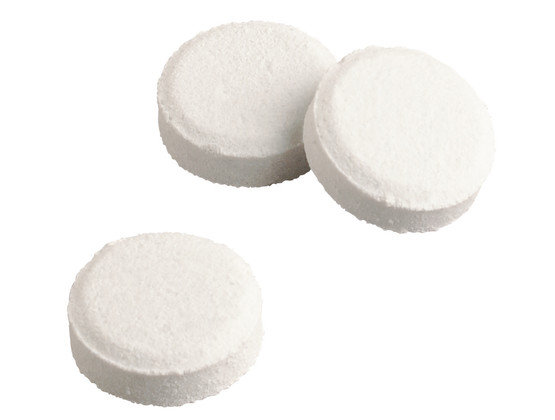
Best For: Ultralight hikers who prefer tablets over filters
- Type: Tablets
- Weight: 1oz per 20 tablets
- Time: 15 minutes to 4 hours
- Price per liter filtered: $0.55
- Treats: Bacteria, protozoa (including crypto), viruses
- Buy At: Amazon
Review:
The Micropur MP1 tablets by Katadyn are one of the few which can kill Cryptosporidium in water. It also treats bacteria, protozoa, and viruses in water. The downside is that there is a 15 minute wait time for bacteria and viruses and 4 hours for Crypto!
Remember that chemical treatments don’t kill worm eggs like from tapeworms. Thus, I’m not a fan of chemical treatments. The cost also adds up quickly, especially on long hikes. The only real benefit of choosing tablets is they are much lighter than other systes.
Pros:
- One of few chemical tabs which treats Crypto
- Least bad-taste of any water tablets
Cons:
- Expensive per liter treated
8. SteriPEN Ultra
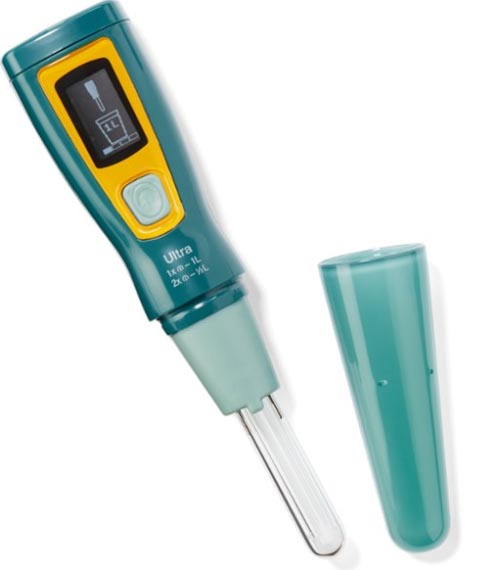
Best For: A cheap way of treating viruses after filtering
-
- Type: UV purifier
- Weight: 5oz
- Time: 1 liter/90 seconds
- Price per liter filtered: $0.01
- Treats: Bacteria, protozoa, viruses
- Buy At: Amazon
Review:
The SteriPEN Ultra is a UV light purifier; it has a wand which you stick in the water. When activated, the wand shoots UV light into the water, effectively killing bacteria, protozoa, and viruses. The actual SteriPEN is a bit pricy but it lasts for 8,000 liters of water. This breaks down to around just $0.01 per liter treated.
The downside with UV light purifiers is they won’t kill larger pathogens like worm eggs. Nor will they remove sediment. If the water is murky, the UV light won’t be able to reach pathogens and the treatment isn’t as effective. So, SteriPEN is only effective if the water is already clear or you pre-filter it.
Another downside to consider is the SteriPEN Ultra requires batteries which have to be recharged fairly frequently. Bring a lightweight power bank or a portable solar charger if on longer trips!
I wouldn’t recommend using the SteriPEN Ultra by itself in the backcountry. However, if you are worried about viruses, it can be used in combination with the Sawyer Mini or another filter for effectively killing all pathogens in water.
Pros:
- Cheap way of treating viruses
- Lightweight
- Easy and fast to use
Cons:
- Requires batteries
- Doesn’t work on murky water
Backpacking Water Filter vs. Purifier
Most backpacking water filters can only remove larger pathogens like bacteria, protozoa, and worm eggs. By contrast, a purifier is also able to treat viruses.
Viruses are very small in size. For a water filter to remove viruses effectively, it must have an absolute pore size of 0.02 microns or less. The MSR Guardian is one of the few filters which fall into this category.
Understanding What You Need to Treat in Water
Every so often in the backpacking community, a debate occurs about whether you can drink water directly from a stream or river without treating it. Inevitably someone will argue that they’ve been drinking untreated water for years and been “fine.”
Yes, clear water from a fast-moving mountain stream, especially near the source, might be safe to drink. But even clean-looking water can be contaminated with microorganisms from sources like animal waste. This is why organizations like the Water Research Network, National Parks Service, and biologists all warn against drinking water directly from the source. It must be treated first!
Depending on where you are going backpacking though, you might not need to treat the water for everything. Here’s what contaminants are found in water and when they are a concern.
| Contaminant | Treated By |
|---|---|
| Bacteria | Filters UV purifiers Boiling Chemical tablets/drops |
| Protozoa | Filters UV purifiers Boiling Some chemical tablets/drops |
| Worm Eggs | Filters Boiling |
| Viruses | Filters (0.02 microns) UV purifiers Boiling Chemical tablets/drops |
| Chemicals | Activated carbon |
Bacteria
- Where Found: Backcountry water (streams, lakes, rivers, etc.), well water, tap water from underdeveloped countries
- Treated with: Boiling, filtering, UV light, chemical treatments
- Examples: Coli, salmonella, dysentery
Bacteria is a huge problem in tap water of underdeveloped countries. It’s also ever-present in the wilderness. Yes, bacteria is found even in clean-looking backcountry water!
In small amounts, this bacteria might not do you any harm (which is why some hikers drink from streams without problem). However, it also doesn’t take much bacteria to give you a massive GI infection – especially when your immune system goes to hell from fatigue.
The good news is that bacteria in water is easy to treat. The smallest bacteria are around 0.2 microns in size. Any filter with an absolute rating smaller than this will effectively filter out bacteria. UV light will deactivate bacteria. Chemical treatments using iodine or chlorine are generally very effective at killing bacteria, though some bacteria are developing resistance.
According to the EPA guidelines, you can also kill bacteria by keeping it at a rolling boil for at least one minute (3 minutes at elevations above 5,000 feet). Since boiling also kills other types of pathogens in water, you don’t need to treat your water used for meals if you let it stay at a rolling boil for this long.
Protozoa
- Where Found: Backcountry water (streams, lakes, rivers, etc.), well water, tap water from underdeveloped countries
- Treated with: Boiling, filtering, UV light, chemical treatments*
- Examples: Giardia, Cryptosporidium
Protozoa are single-celled organisms. It’s their cysts that we come in contact with and the cysts then “hatch” once inside our bodies. Many are parasitic in nature and multiply inside their human hosts. It’s scarily easy to get infected with protozoa. Drinking water contaminated with human feces is the most common source. However, you could get infected simply by shaking hands with someone who didn’t do a good job washing after going to the bathroom (and what backpacker really washes their hands properly on the trail?).
Because of how easy it is to get infected, backpackers often get knocked down by protozoa infections. Giardia is the most infamous, but there are plenty of others.
Protozoa tend to be very large – about 10 to 30 microns in size (source) – so are easily removed with a backpacking water filter. They can also be killed by boiling. UV light treatment is mostly effective with one independent study finding that 99.54% of protozoa were deactivated by the SteriPEN.
Chemical treatments aren’t as effective in treating protozoa cysts though. Iodine treatments seem to be more effective than chlorine. The infamous Cryptosporidium is especially resistant to chemical treatment. Many water treatment drops and tablets won’t treat Cryptosporidium at all! The tablets which do treat Crypto tend to be very pricy.
Parasitic Helminthes
- Where Found: Backcountry water (streams, lakes, rivers, etc.), well water, tap water from underdeveloped countries
- Treated with: Boiling, filtering
- Examples: tapeworms, flatworms
Here’s a new word to throw around at basecamp! Helminths are larger, multicellular organisms which are often visible to the naked eye in their adult form. The most infamous ones are cestodes (tapeworms) and platyhelminths (flatworms).
Backpackers don’t talk about helminthes much. We take it for granted tapeworms are actually still a big issue in some places. Isle Royale, in Michigan for example, is notorious for having tapeworms. I’ve even seen these in a crystal-clear mountain stream at 2,500 meters! It just goes to show elevation doesn’t necessarily make water safer to drink. People who don’t pick up their dog crap while hiking are also contributing to outbreaks of tapeworms in places they didn’t use to be found.
Generally, it’s not the adult helminth worms that we are worried about; it’s their eggs. Luckily, the eggs are large and can be removed with a good backpacking water filter. Boiling will also kill the eggs. UV light and chemical treatments will not treat helminth eggs!
The good news is that tapeworms and other helminths won’t give you terrible diarrhea right away (or at all). You can happily continue your hike without even realizing that you’ve got a parasite living in your gut. Some of these worms might even be good for our immune system. But some of those worms can do serious damage – so filter or boil your water! If you insist on using chemical or UV treatment, then go get a stool sample analysis after your finish your hike!!!
Viruses
- Where Found: Some backcountry water, well water, tap water in underdeveloped countries
- Treated with: Boiling, filtering, UV light, chemical treatments
- Examples: Hepatitis, adenovirus, norovirus, rotavirus
Viruses *generally* aren’t an issue when you backpacking in the remote wilderness. The reason for this is that viruses don’t survive well in water. Further, UV light from the sun will usually kill what active viruses are in the water.
However, viral infections from water are becoming much more common even in backcountry. Take the norovirus outbreaks on the Appalachian Trail. As increasingly more people take up backpacking, there’s a higher chance of viruses from feces getting into water sources. A virus can result in terrible GI symptoms within 12 hours of infection. And once dozens of hikers have diarrhea on the trail, you can bet the virus is only going to spread further!
If you are going somewhere which is truly remote, you probably don’t need to worry about viruses; a basic water filter will do. But, anywhere that is highly-populated could have viruses in the water sources.
Viruses average 0.03 microns in size (some are much smaller). To remove viruses with a filter, the CDC recommends using a filter with an absolute pore rating of 0.01. Alternatively, you can first treat the water with a standard backpacking filter (which will remove bacteria, protozoa, and eggs) and then use UV light or chemical tablets/drops to kill any viruses.
Chemicals
- Where Found: Agricultural areas, mining areas, heavily-populated areas
- Treated with: Activated carbon
- Examples: Benzene, pesticides, chlorine
Chemicals are by far the hardest contaminate to treat in water. The good news is that you probably don’t have to worry about chemicals when you are backpacking – especially in remote areas or high elevations. Another good thing is chemicals won’t cause you immediate harm. Sure, your risk of getting cancer 20 years down the road might increase, but you won’t have to cut your hike short because of diarrhea.
Only activated carbon can remove chemicals from water. It works by absorbing the chemicals. The dirtier the water, the faster the cartridge will get “filled up” and need to be replaced. After it’s filled up, the cartridge will actually start leaching chemicals back into the water as you treat it! So, you’ll need to pay careful attention to how much water you’ve treated and bring along replacement cartridges on longer trips.
Types of Backpacking Water Treatment Systems
All backpacking water treatment systems can be broken down into 4 types: filters, activated carbon filters, UV purifiers, and chemical treatments. You can also treat water by boiling it.
Bear in mind that none of these methods of treating water is perfect. If you are dealing with water that might have viruses and/or chemicals in it, you’ll likely need to use two methods to adequately purify the water.
| Type | Treats | Doesn't Treat |
|---|---|---|
| Filter | Sediment Bacteria Protozoa Worm eggs | Viruses* Chemicals Bad tastes |
| Activated Carbon Filters | Chemicals Bad tastes | Bacteria Protozoa Worm eggs Viruses Sediment |
| Chemical Drops/Tablets | Bacteria Viruses | Some protozoa* Worm eggs Chemicals Sediment Bad tastes |
| UV Purifiers | Bacteria Protozoa Viruses | Worm eggs Chemicals Sediment Bad tastes |
| Boiling | Bacteria Protozoa Worm eggs Viruses | Chemicals Sediment Bad tastes |
Filters
A water filter acts like a sieve; it allows water to flow through but catches pathogens. Most backpacking water filters have absolute micron ratings. This is a measurement of their largest holes. For a filter to catch all bacteria (as well as large organisms like protozoa and worm eggs), it must have a rating of 0.2 microns or less.
Some newer backpacking water filters have ratings of 0.02 microns. Note the decimal point: This is 10x smaller than a standard filter! These filters can also remove most viruses. However, the smaller pore size means they have very slow flow rates and tend to clog easily. The exception is advanced filters like the MSR Guardian which has a self-cleaning mechanism as you pump.
Backpacking water filters can further be divided into types by how they are used.
- Pump: These have hand-operated pumps. They tend to be easier to use and have faster flow rates.
- Squeeze: Water goes into a bottle or bag attached to the filter. You then squeeze to force water through the filter. It’s an annoying, time-consuming process.
- Straw: These seem cool but are impractical in real-life use. Read why I hate straw filters here.
- Bottle: The filter is set into bottle. Dirty water goes into the bottle and you suck it through a straw.
- Push: The GRAYL is a bottle filter. However, you push down on the filter to fill the bottle with water instead of having to suck it out.
Activated Carbon
Activated carbon cartridges are sometimes found in water filters. Instead of catching contaminants like a sieve, they absorb the contaminants. This is the only method for removing chemicals from water. The cartridges tend to fill up quickly and need frequent replacement, so activated carbon filters are expensive over the long run. It’s your only choice in agricultural, mining, or other contaminated areas.
UV Purifiers
These shoot a beam of UV light into the water to kill bacteria, protozoa, and viruses. They are easy to use and brands like SteriPEN have been tested for reliability. The downside is UV purifiers rely on batteries, can break, and aren’t effective in treating larger organisms. They are still popular for travel and as a way of killing viruses after filtering.
Chemicals Tablets/Drops
Usually made of iodine or chlorine, chemicals can be used to treat many organisms in water. However, they aren’t the most effective method. Many chemical treatments won’t kill Cryptosporidium nor larger organisms. You also have to wait a long time until the chemicals work. Despite this, chemical water treatments remain popular because they are so lightweight. Note that if you are backpacking while pregnant the CDC advises against using iodine tablets as they can cause harm.
What water treatment method do you use when backpacking? Let us know in the comments section below!
Additional sources for this article:
https://www.watertechonline.com/wastewater/article/15545721/bacteria-and-viruses-commonly-found-in-drinking-water
https://www.npr.org/sections/goatsandsoda/2016/03/22/471408630/what-makes-water-unsafe-not-the-color-taste-or-smell-worldwaterday
https://interestingengineering.com/dirty-clean-how-water-treatment-plant-works
https://greece.greekreporter.com/2016/05/28/is-it-safe-to-drink-tap-water-in-greece/
https://www.intechopen.com/books/the-relevance-of-hygiene-to-health-in-developing-countries/drinking-water-treatment-and-challenges-in-developing-countries
Image credit: “Pumping water from a reliable source” (CC BY 2.0) by waitscm


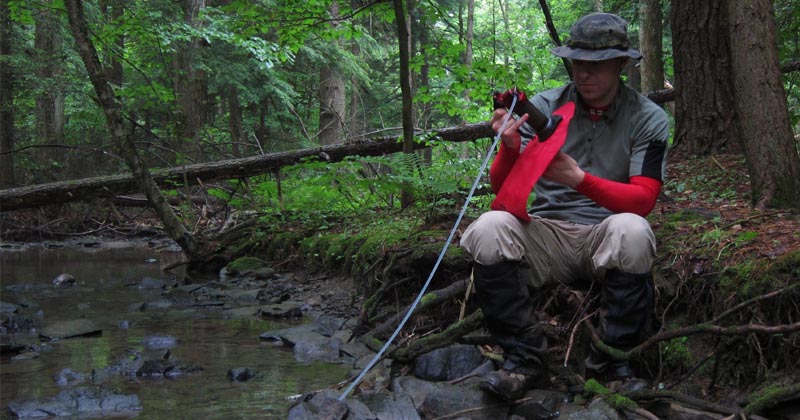
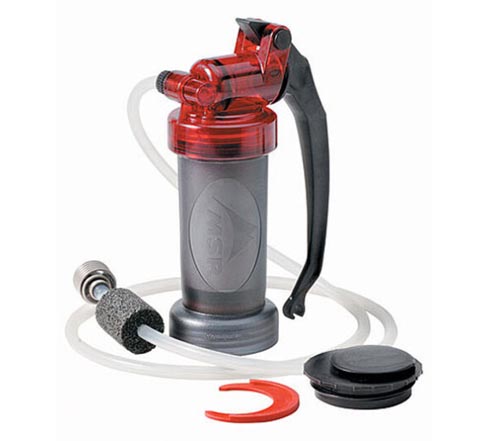
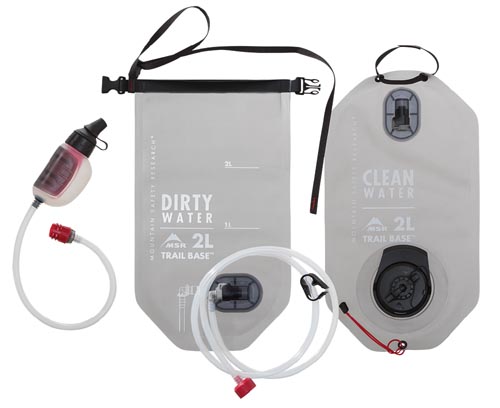

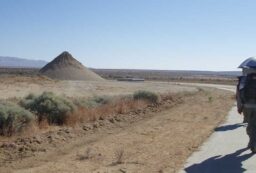
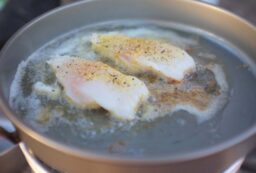







6 Comments
Kass
February 1, 2020 at 2:44 amHave you tried rigging a gravity system with your sawyer? I’ve seen a few YouTube videos for this. I got a sawyer mini for Christmas and wondering best way to utilize it.
Diane
February 3, 2020 at 10:04 amI haven’t and don’t think it will work – you have to put a decent amount of pressure on the water to push it through the filter (I’m going to look up those videos though). I love my Sawyer Mini; just don’t bother with the plastic bags it comes with. They burst pretty easily. I use a plastic water bottle instead. You might find this post helpful; it has tips for using the Sawyer Mini: /sawyer-mini-tips/
MW
May 20, 2021 at 2:52 amI’ve called Isle Royale and they said we need a filter and chemicals. I’m so unsure about which to buy for our family of five. We were looking at the MSR Guardian Gravity, but then after calling MSR, they said we’d need chemicals after their system too.
Could you give a recommendation specifically for this trip? Something that’ll work fast enough for a family of five!
Diane
May 20, 2021 at 2:17 pmI’d play it safe and treat the water with chemical tablets/drops after fitering. You really don’t want to risk the entire family coming down with diarrhea while on a camping trip! The MSR Gravity is desiged better than most gravity filters (sediment settles on the bottom and the exit valve is set higher up), so it shouldn’t clog too frequently. If you are car camping, maybe also bring a few big canisters of water with spouts. Then you won’t have to worry about filtering all of your water.
Kenny
September 3, 2023 at 11:47 pmHello and Hi: … Thank you for your great article. I haven’t yet but after reading it. I do plan on getting a … GRAYL GeoPress. I have a question to you that you didn’t specifically directly answer. They say regarding Mexico and probably central and south America as well. … … … “Don’t Drink The Water There” (tap water I’m guessing is what they’re referring to) … also, on TV I’ve seen shows in places like NY where the tap water is “brown”. So my question to you is this. Will these “water straws” work specifically on places and things like Mexico and NY “brown water”??? In the future I’ll be doing some evangelist and missionary work in other countries and a “straw” could be very beneficial for those type of setting. Thank You for your time.
Diane
September 4, 2023 at 9:20 amIt really depends on where you are and what the water is contaminated with. In a lot of undeveloped countries, the municipal water is definitely contaminated with bacteria and viruses. Removing bacteria is easy. Removing viruses not so much. The Grayl will remove viruses, so this would be good for remote locations.
The thing that gets tricky is when the water may be contaminated by chemicals (such as water sources near agricultural areas or mines). Drinking chemicals won’t make you sick right away like viruses/bacteria/etc. But obviously you don’t want to drink them. The only way to remove these is with an activated charcoal filter (the Grayl has this). It adsorbs the chemicals though, not filters them out. So, some chemicals will still get through. And you have no idea of knowing when the filter is “full” and needs to be changed.
As much as I hate buying bottled water, you’ll probably want to buy water if going somewhere where chemicals are in the water. It’s still good to have a filter though — it will definitely happen that you are at someone’s home and they offer you water from their cistern. 🙂 For these situations though, I actually prefer a bottle-type filter. It’s less awkaward to ask them to fill up your bottle than start filtering the water they give you.